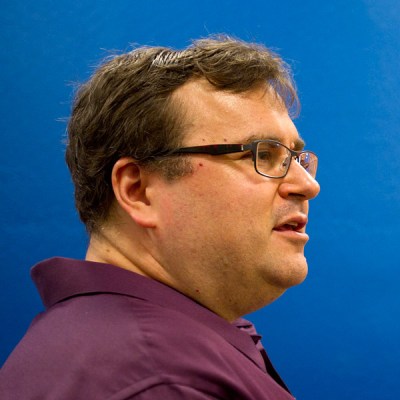You might wonder how, exactly, 13-year-old LinkedIn became a $25 billion company. It wasn’t the first social network. The company admits that, even today, people find it very confusing. Plenty of ambitious competitors have sprung up to take on the company. Yet they’ve all been smoked, eventually, by LinkedIn.
It’s a familiar story in the Bay Area, where many industry-dominating companies – from Uber to Airbnb to Facebook – are based. That’s no accident, says LinkedIn cofounder Reid Hoffman. In fact, this fall, Hoffman is teaching a class at Stanford — his alma mater — on how startups like LinkedIn and the others grow into what he calls “scale-ups.”
Another word he’s introducing into the ever-ballooning vernacular of Silicon Valley: “Blitzscaling.” The idea: that to compete in the global, networked age, companies need to outmaneuver more competitors than ever, and they need to do it, crucially, by scaling lightning fast.
The idea for the new class came from Hoffman’s involvement with a startup course held last fall at Stanford by Y Combinator President Sam Altman. Hoffman was among many of Altman’s guest lecturers. But while Hoffman talked with students about how to be a great founder, another topic – the importance of being able to scale — nagged at him afterward.
“You can get 10 technical people and [some momentum] in a lot of different [geographies],” he says. “But we create so many unicorns in Silicon Valley.” The reason, he says, is the best Silicon Valley startups understand that so-called first mover advantage only gets a company so far. To win the game, it has to be the “first mover at scale.”
Hoffman wants more promising founders to understand the difference. Indeed, despite being notoriously busy – Hoffman already spends his weekends advising startups, while splitting his weekdays between LinkedIn and Greylock Partners, where he’s a VC – Hoffman sounds enthusiastic about sharing what knows, including about how startups achieve product-market fit, how they settle on an appropriate financing strategy, and how a sales model changes as a business grows.
Hoffman has enlisted plenty of high-wattage help in the endeavor, too. Among the numerous speakers who’ve agreed to participate in one-on-one conversations for Hoffman’s students include Altman, Theranos founder Elizabeth Holmes, LinkedIn CEO Jeff Weiner, former YouTube VP Shishir Mehrotra and Yahoo CEO Marissa Mayer.
Hoffman won’t be alone in leading the class, either. While he expects to head up the twice-weekly, 10-week-long course “whenever I’m in town,” which he says will be “half the time, realistically,” his friends John Lilly (the former Mozilla exec turned Greylock Partner), Allen Blue (LinkedIn’s VP of Product Management) and renowned startup adviser Chris Yeh, will also be taking turns.
Stanford students who plan to start or help build a large-scale company — which probably applies to most Stanford students these days – are the primary target for the class.
Toward that end, Hoffman is asking for students to fill out an application process that will help him identify who’d most benefit from the class. (Presumably, this process will also help Greylock identify promising candidates for future funding.) Psst, Stanford students, you can apply right here.
The class is also holding a number of seats for those who aren’t affiliated with Stanford but who are keen to help some other “region of the world build a ‘blitzscaling’ ecosystem.” For those class hopefuls, there’s a separate application link right here.
The deadline for both is this Friday, September 18.
For the rest of us who want to learn from Hoffman and company, some good news. He tells us that, as with Altman’s class last fall, there will be videos of each class posted online so anyone who wants can learn more about scaling up the right way.
In the meantime, get ready to hear the expression “blitzscaling” more often. Gently ribbed about it, Hoffman tells us: “It’s a pretty unique phenomenon that requires a unique set of skills. Am I enamored with the word?” he says, laughing. “No. But I do think we need a term for it.”
